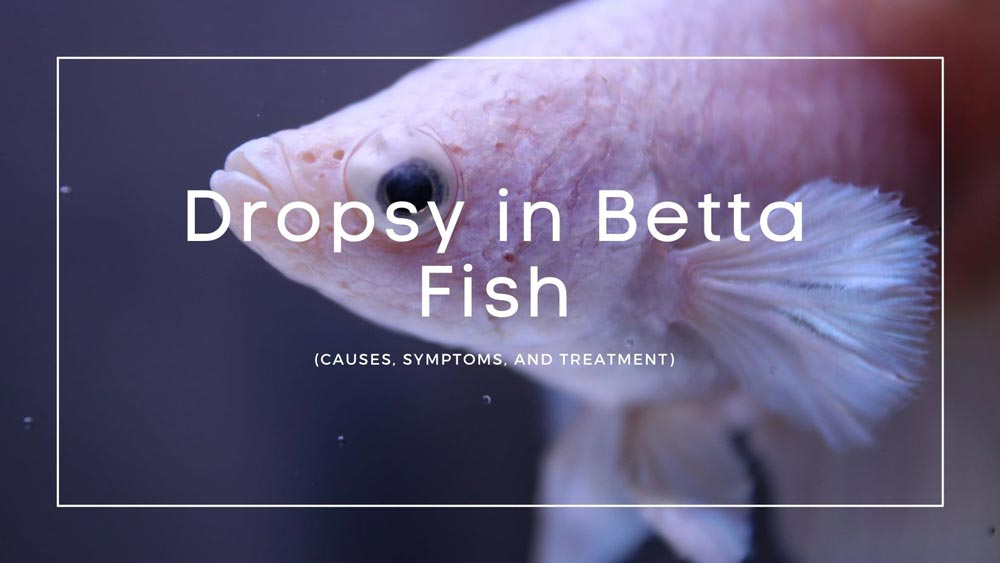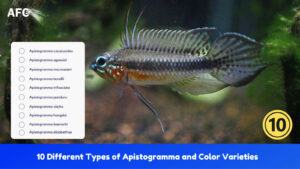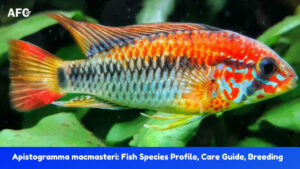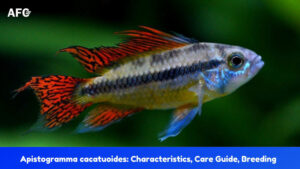Despite the silly name, dropsy in betta fish is in fact a very serious condition. The symptoms can be unpleasant at best for your betta fish. Dropsy can ultimately prove to be devastating, and this is particularly true if you fail to catch what is commonly and mistakenly referred to as a disease.
While not a disease in the specific sense of the word, dropsy nonetheless can mean your betta is not in the best of the health. By being able to correctly identify dropsy symptoms, which will then give you the ability to take advantage of the various dropsy treatment options that are available to you.
If time and diligence are in your corner, the chances of recovery are in fact quite high.
Let’s start by understanding what we’re talking about, when we talk about dropsy in the first place.
What Is Dropsy in Fish?
One of the most frustrating things about dropsy is that there is no one specific thing that can cause. Conditions are established through the presence of gram-negative bacteria. There are a number of different causes that have been pointed to as a primary. However, dropsy ultimately seems to be a condition that can come from a range of sources.
Another thing we know for certain is that dropsy is extremely rare in healthy bettas. To put it another way, dropsy becomes a dangerous possibility for betta fishes with diminished or compromised immune systems.
Several factors can create such a weakness. Understanding the value of maintaining the best possible tank conditions is going to carry you a long way. We’re going to cover that. However, for the moment, let’s take a closer look at the most common symptoms of dropsy to watch out for.
It cannot be stated enough times that when it comes to seeing how to treat dropsy in bettas, a speedy response is absolutely vital.
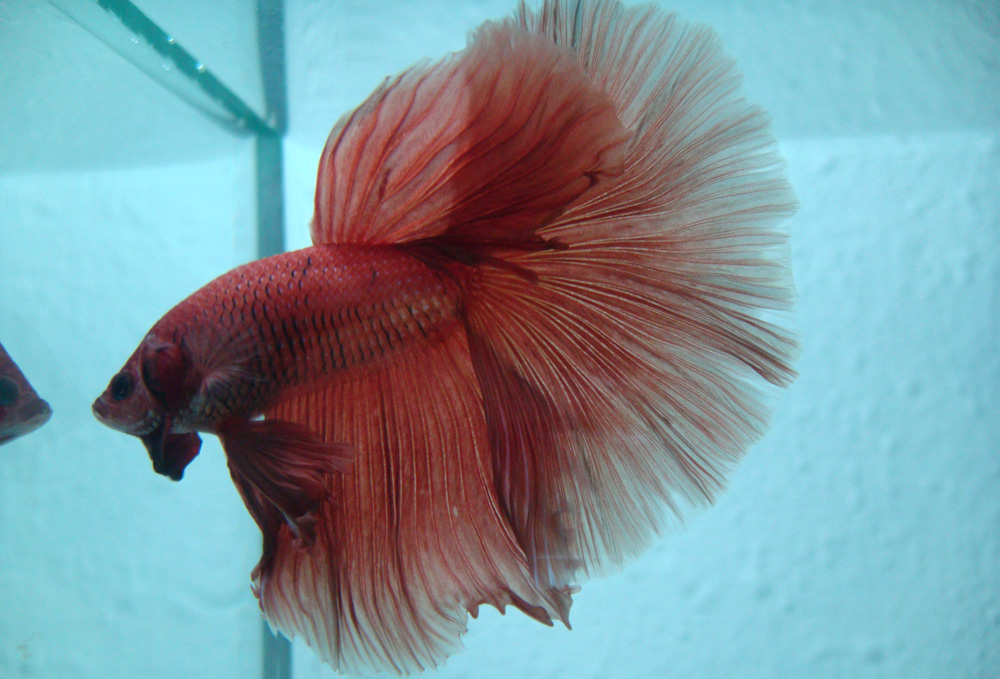
What Causes Dropsy In Betta Fish?
Another frustrating thing about dropsy is how slowly it sometimes spreads. In some cases, your betta can have dropsy for a while, before they ever show any of the symptoms we are going to discuss.
Dropsy works at slowly making its way into the scales of your betta. When this occurs, their entire immune system can be impacted. Causing harm to both the kidneys and liver, dropsy also leads to fluid retention. This in turn creates the bloated betta stomach that has long been associated with this condition.
As you might imagine, this fluid buildup can make your betta very unhappy. Besides the fact that it can shorten their lifespan, particularly if it is left untreated, dropsy can also make your betta uncomfortable. They will swim and eat less, which in of itself will contribute to a decline in their health. You can see by now how easy it is for dropsy to shift from a minor infection to a life-threatening situation.
What Are Betta Fish Dropsy Symptoms?
If you already know what edema in human beings can look or feel like, then you have a rough idea of what dropsy looks and feels like for your bettas. Arguably the most notable physical symptom of dropsy is the presence of a bloated belly.
To reiterate an earlier point, dropsy is not a disease. It is a bacterial infection that can be created by certain conditions. In fact, the symptoms of dropsy are in fact the underlying symptoms of a more serious situation. This means that if you treat the situation, the infection will go away. Furthermore, through consistent aquarium maintenance and care, you will insure an extremely likelihood of dropsy never returning either.
Here are the main symptoms you need to watch for.
What Are Some Of The Earliest Signs Of Betta Fish Dropsy?
Early detection of dropsy can prove to be a little tricky. However, with a careful, trained eye, you can spot some potential red flags, before they amount to something deadlier:
First of all, look to their appetite. This is almost always where you can figure out if something is wrong. Just keep in mind that a poor appetite does not automatically mean your betta has dropsy. Poor appetite is connected to many of the diseases and infections which threaten your bettas immune system. If this is the only symptom you’ve noticed so far, there isn’t a lot more that can be done, beyond simply keeping an eye on them.
You do NOT want to begin a dropsy treatment, until you are extremely certain that this is what your betta has. Treatments can be harmful, if there is nothing to actually treat.
Is your betta avoiding other fish? This is another possible warning sign. Again, this is another early symptom in which the presence of this behavior is not a guarantee that an infection is present. However, if you combine this with low appetite, the odds are going to start to climb a bit.
If the betta is not only hiding from other fish, but tends to prefer to stay in just one place, then you are definitely looking at a potential case of dropsy. If you take all three of these early symptoms, you will have a betta with a very high probability of having dropsy.
Even so, all of these symptoms can still be indicative of something else. Let’s break down the more serious symptoms you should appreciate in greater detail.
What Are The More Serious Signs Of Dropsy Betta?
If your betta is expressing all three of the early warning signs we covered above, the most infamous symptom, the bloated belly, is likely to appear soon after. You can expect to notice the appearance of this bloating roughly two to three days after the early symptoms have become apparent. Yes, treatment is still well within the realm of possibility at this point, but it does get more challenging.
The stomach is going to look swollen. This is a clear sign that your betta has dropsy.
Like many other diseases and infections with betta fish, you are also going to want to pay attention to the scales. If you have heard the word “pinecone” in association with the physical symptoms of dropsy, then should have a pretty clear idea of what we are talking about. There is a reason why this is perhaps the most well-known of all the symptoms we’re discussing right now.
When you see it on your betta for the first time, prepared to be shocked, as it is quite distinctive. The name comes from the fact that all of its scales are sticking out, similar to what you would have with a pine cone. By far, the worst part at this point is the somber knowledge that effective treatment becomes far less likely.
How To Prevent Dropsy In Bettas?
Obviously, still do your best to get your betta back to good health, but understand the value of everything we have covered thus far. It is designed to give you a foundation that will hopefully prevent things from getting to this stage in the first place.
You should also pay attention to the gills. If their appearance lacks in color, resembling a more pale appearance, then your betta may have dropsy. Bulgy eyes and a red, bulgy anus can also be indicators that your betta is retaining a dangerous amount of fluid. A curved spine can also be a strong indicator, as well as a betta that is seemingly reluctant to swim to the bottom of your tank.
With a clearer idea of the symptoms you are trying to spot, you now have a firm foundation to learn about how to treat dropsy bettas. While dropsy can be hard on your bettas, you’re going to be pleased to find the treatment path is pretty straightforward. What you want to do is make sure you get started from the first moment you know your betta has dropsy.
What Are My Betta Fish Dropsy Treatment?
Let’s go through all the steps involved in how to treat dropsy in betta:
- Start by setting up your quarantine tank. Like many other known diseases and infections which can befall bettas, you’re probably going to want to cut them off from the other fish in your tank. This prevents the bacteria from spreading, while also giving your infected betta a peaceful space with which to heal up in a stress-free environment. Five to ten gallons is fine for a quarantine tank.
- Make sure to add conditioned water, as well as places in which your betta can hide when the mood strikes. You should also have a heater, and you should also perhaps even consider getting a filter.
- The next step will be to change out the water currently in your tank. This doesn’t have to be a lot. It doesn’t even have to be half. As far as the original aquarium is concerned, you only need to change around 25%. This is an important step in making sure the rest of the fish in the tank do not contract dropsy. Treatment and management become considerably more challenging, if you have more than one betta or fish displaying symptoms.
- Get your hands on some aquarium salt. Thankfully, there are lots of good products available through Amazon and elsewhere. We don’t have a specific recommendation, but make sure you purchase what you need from a reliable, popular manufacturer. Anything you purchase will come with clear instructions for use.
- Put your infected betta into a plastic bag with some water from the main tank. Put this bag in the water of the new tank. Allow your betta around twenty minutes to get themselves comfortable with the new tank. Then you can let them out of the bag.
- Now, this next part is really a personal choice. If you only have the one infected betta fish, then disregard changing only 25% of the water. Our suggestion at that stage would be to change out seventy-five percent of the water. The entire tank, as well as everything associated with the tank, should be carefully scrubbed and cleaned.
- Some would suggest doing this regardless, but we’re talking about a considerable amount of work and resources at that juncture. It is not absolutely necessary, but it can make for a good measure for anyone who w ants to be completely confident in the treatment they are using for their betta. If you are interested in going this route, make sure you know everything there is to know about cleaning out your betta tank safely and effectively.
- This is where we start administering the best antibiotics you have on hand. In our experience, amoxicillin provides the most effective relief against this bacterial infection. These products are usually distributed in 500mg dosages. Make sure you follow all of the directions associated with whatever you purchase, in order to ensure your betta gets all of the benefits.
- The most effective way to give your bettas amoxicillin is to soak some into their food. This will be explained in the directions of whatever you purchase. If your betta is still eating, this should be easy enough to do. If not, do not panic! You can still administer the medicine!
Don’t Forget To Change The Quarantine Tank Daily!
This is regrettably something many people forget to do!
As we mentioned before, dropsy treatment will probably involve aquarium salt (do NOT use table salt, as it is NOT the same thing!) and antibiotics. Because of this, your water should be changed out every single day. This won’t take long, as it is only a 5-10-gallon tank, but it must be kept in mind.
Conclusion
At this point, you should have all the information you need. As we mentioned before, efficiency is the key to successfully treating the condition. In other words, if you notice all three of those early warning signs of dropsy in your betta fish, then you can almost certainly move on to exploring treatment options. It is highly unlikely that if your betta fish isn’t eating, and prefers to hide and avoid other fish, they have dropsy.
With the tips covered above, you’re on the right track to help your betta get better.
